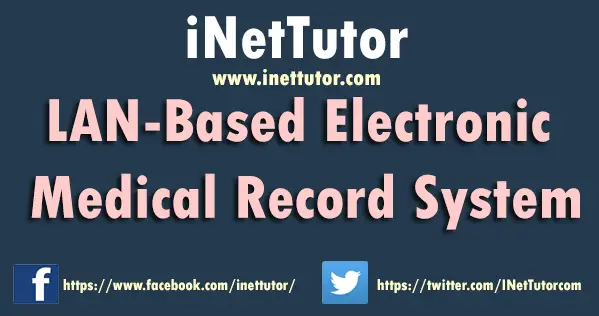Online Clinic Expert System Review of Related Literature
Review of related Literature
This part of the study covers the literature and the studies which come from reading and researching related books, undergraduate thesis and other resource materials. The researchers file up this information to help the readers and future researchers to fully understand the study.

Expert system is one of the useful products of modernization that plays an important role in health aspects. An expert system is a computer system that emulates the decision-making ability of a human expert. Expert systems are designed to solve complex problems by reasoning about knowledge, represented primarily as if–then rules rather than through conventional procedural code. Very little attention seems to have been given to the ways in which explanation facilities could support modern expert system medical tasks.
Many problems encountered in clinical practice could benefit from the aid of computerized clinical decision support systems—computer programs that offer patient specific, actionable recommendations or management options to improve clinical decisions. Systems for diabetes mellitus exemplify the opportunities and challenges. Diabetes care is multifactorial and includes ever-changing targets and methods for the surveillance, prevention, and treatment of complications. Busy clinicians struggle to stay abreast of the latest evidence and to apply it consistently in caring for individual patients with complicated co-morbidity, treatment plans, and social circumstances. Most of these practitioners are generalists who face a similar battle with many other conditions and often in the same patient, all under severe time constraint and increasing administrative and legal scrutiny.
We did not find that systems tested more recently (after 2000) were any more effective than those tested earlier. While not all systems have been tested in randomized controlled trials that fit our criteria, computerized clinical decision support systems have been evolving since the late 1950s, when they were standalone programs used for diagnosis and were independent of other clinical systems. They were soon developed as part of clinical information systems at academic medical centers to overcome the burden of substantive data entry. One of these, the Registries Medical Record System at the Wishard Memorial Hospital in Indianapolis, contributed 16 trials to our dataset. In the earliest trials (the first was published in 1976), protocol based rules examined the computer records of the following day’s patients each evening and generated printed reminder reports that staff attached to the front of patients’ charts. The system soon included hundreds of decision support rules and, in the 1980s, clinicians began receiving prompts directly through the Medical Gopher, an MS DOS program for microcomputers connected to the Registries Medical Record that allowed electronic order entry. As its capabilities grew more sophisticated, investigators used the Medical Gopher to integrate clinical guidelines for complex chronic conditions, suggest less expensive alternatives within a drug class assist with recruitment into research studies, check for potential drug interactions and allergies, and encourage the appropriate use of diagnostic or monitoring tests. More recently, systems use the internet, email, and mobile devices to communicate with patients and practitioners. (Committee on Quality of Health Care in America Institute of Medicine. Crossing the quality chasm: a new health system for the 21st century. National Academies Press, 2001.)
This system will help small barangays and town clinics to admit patients even though there is no physician available. This system will render services such as automatic prediction of the patient illness (e.g. skin allergy, cough, fever, etc.) the laboratory test that the patient should undergo and even the treatment that should be done prior of the patient’s diagnosed illness. This system will also be the one responsible for sending text messages (SMS) to the patient and give them advice when to come back to the clinic if the physician is available.
Related Studies
“Proposed EENT Healthcare Management System”
Divina Gracia Bucog, Justine Faltado, Jethro Boy Magpantay, Mariel Ramos
University of Batangas
April 2014
The researchers proposed this system that will minimize all paper works and manual records keeping, therefore allowing doctors and staff ease in keeping track of patients, reducing patient’s waiting time and increasing the number of patients served a system that is fully automated, user-friendly, time effective and efficient.
Apparently this study is somehow related to the studies that we have conducted due to the same objectives and goals that we are rendering. The goal and the objective of helping the doctors in having a fast tracking system to their patient and a more systematized system that would probably help a lot in analyzing information about the situation a patient is facing off. The study aims to help also the patient to be able to lessen the length of time that they need to provide upon going into the clinic. Since then we have the same ideas our studies went to much higher level. As we observe most of the clinic in the rural areas were not able to adopt the new system. Most of the the barangays are facing problems when it come to clinic consultation. Due to the area location some of the doctors were not able to come in the area at the first place to render their services they took time to just go and conduct a medical mission.
As a result most of the family in rural areas where not able to accommodate proper medical treatment. This system will help small barangays and town clinics to admit patients even though there is no physician available. This system will render services such as automatic prediction of the patient illness (e.g. skin allergy, cough, fever, etc.) the laboratory test that the patient should undergo and even the treatment that should be done prior of the patient’s diagnosed illness. This system will also be the one responsible for sending text messages (SMS) to the patient and give them advice when to come back to the clinic if the physician is available.
“Intelligent user interface in fuzzy environment.”
Dominic Tapalla, Erwin Joseph Rodriguez, Ysabel Ajeda
University of the Philippines
March 2014
The study conducted by the researchers revealed that “IUI function is to facilitate the user to perform analysis, planning, decision-making, management and coordination of organizational unit. Under the facilitating in IUI is understood the full use of intelligence of the system to perform these and other functions by interacting with it in natural and/ or other language. In this regard, the function of the IUI should be based on the perception, processing and synthesizing knowledge in real time. The results of the work focused on the creation multi-agent IUI for multilingual interaction in autonomous, situational, intelligent, multi-agent information control systems of robots, unmanned production and spacecrafts and others, functioning in the fuzzy environment and unforeseen situations in advance.”
Now a days, prior to the fast moving time changing technology plays a major role. The trend in a different aspect of life also evolves to its new level. One of the areas or aspect of life that has coped with this new changes is the field of medication or how the specialist develop a system that will surely help a lot in treating various diseases.
There were different machines and equipment that are being used and invented to give cure to the various diseases that in the past time has no treatment. Machine that provides medicines, machine that discovers the diseases that a particular patient is suffering. Aside from those benefits that the technology has been contributed in the field of health, technology also helped a lot in the aspect of systematizing and organizing a particular file of a particular patient.
This previous study deals with the use of technology and its involvement in the aspect of health in relation to our study continue the trend of the technology and its possible use in the medicinal field.
Aside from those medical treatments that has been invented, an easy way for consultation is also being used in this field. Now a days mostly on the rural areas were in the trend of technology does not able to come up yet a particular system has been invented with the help of technology. A system that will easily admit patient and seek for an advice or treatment on the particular illness that they have. This study uses the advance technology to reach out the particular area where doctors were cannot able to visit every day.
Credits to the authors and developers of the project/study.
You may visit our Facebook page for more information, inquiries, and comments. Please subscribe also to our YouTube Channel to receive free capstone projects resources and computer programming tutorials.
Hire our team to do the project.


